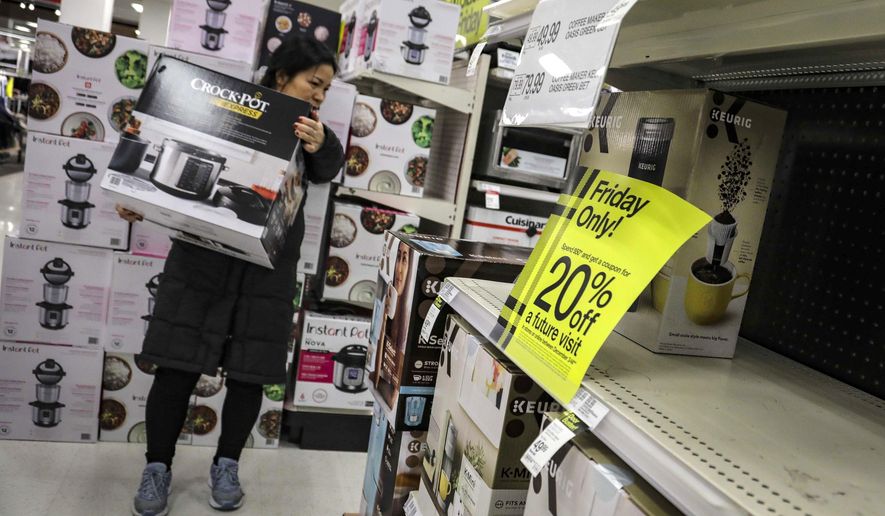The coronavirus pandemic will hurt Black Friday sales, retail analysts say, but the unofficial holiday kickoff will remain one of the busiest shopping days of the year.
Traffic grew at brick-and-mortar shops last year, the first time in several years, indicating that consumers were eager to leave their homes rather than make online purchases.
Those numbers likely will roll back significantly because of spiking COVID-19 numbers and increased government restrictions keeping shoppers away.
Last year, retailers averaged about 500,000 walk-in customers per week, according to a study by Zenreach, an online marketing company.
This year, stores are averaging about 200,000 walk-ins per week, a 35% decline. That percentage is expected to dip to 21.5% by the end of the year as the pandemic worsens.
Still, there is some good news for retailers.
The National Retail Federation expects holiday sales in November and December to rise between 3.6% and 5.2% from last year. That would generate between $755.3 billion and $766.7 billion for retailers.
Consumers have more money to spend on gifts and celebrating the holidays since the pandemic has sidelined travel and entertainment expenses.
“Given the pandemic, there is uncertainty about consumers’ willingness to spend,” said NRF Chief Economist Jack Kleinhenz. “But with the economy improving, most have the ability to spend.”
Last year, holiday sales rose 4% to $729.1 billion from 2018.
The NRF is projecting most of that increase will come from online sales, which is expected to jump between 20% and 30% this year. Online sales could reach as much as $218.4 billion, compared to $168.7 billion in 2019.
The group warns any further shutdowns of stores as virus cases surge could derail sales. And it emphasized that any new government stimulus package would help the holidays.
When the pandemic was declared in mid-March, essential retailers such as Target and Walmart were able to stay open while nonessential stores, like department stores, were forced to close. That further increased the dominance of big box stores, while mall-based clothing stores faced further peril.
The temporary closures accelerated bankruptcy filings of a slew of already-struggling chains such as J.C. Penney, Lord & Taylor and Neiman Marcus.
Many mall-based stores and other small and mid-sized businesses are still struggling heading into the heart of the holiday season.
When nonessential retailers are forced to shut down, their e-commerce business can’t expand enough to keep them whole, said Nick Mangiapane, chief marketing officer at Verisk Financial’s Commerce Signals unit, which captures credit and debit spending from 40 million U.S. households.
In the first wave of COVID-induced shutdowns, the gap in year-over-year sales trends was 57 percentage points between essential and nonessential, with essential store sales posting a 6.4% gain while the rest suffered a 51.3% drop. During the second spike during the summer, the gap was smaller with few shutdowns, but it was still substantial.
In the current third wave, the sales performance gap so far is sizable, but any shutdowns will dramatically hurt sales for nonessential businesses, according to Mr. Mangiapane.
Still, the NRF cited that the aggregate retail sales have seen a V-shaped recovery, growing both month-over-month and year-over-year each month since June. As calculated by NRF, sales rose 10.6% in October compared with October 2019, likely fueled in part by early holiday shopping. For the first 10 months of this year, retail sales rose 6.4% compared with the first 10 months of 2019.
• This article is based in part on wire service reports.
• Jeff Mordock can be reached at jmordock@washingtontimes.com.




Please read our comment policy before commenting.